Roval Rapide CLX 60 review
Many of you are familiar with the house brand of wheels from Specialized, called Roval. In the past, they’ve dabbled in a lot of different products – aluminum training wheels, tubeless-compatible mountain bike wheels, and even a couple iterations of carbon wheels.
Now Specialized is making a real push into the high tech wheel market, with the new line of CLX carbon wheels. Available in a variety of 40mm and 60mm depths, carbon clinchers, tubulars, and disc brake models, they’re making something for everyone (and more importantly, something to spec on every model of their ever-expanding bike line). Today we’ll review the Roval Rapide CLX 60 carbon clincher, the most aero-intended option of the bunch. We used the wheels during the summer and fall of 2013.
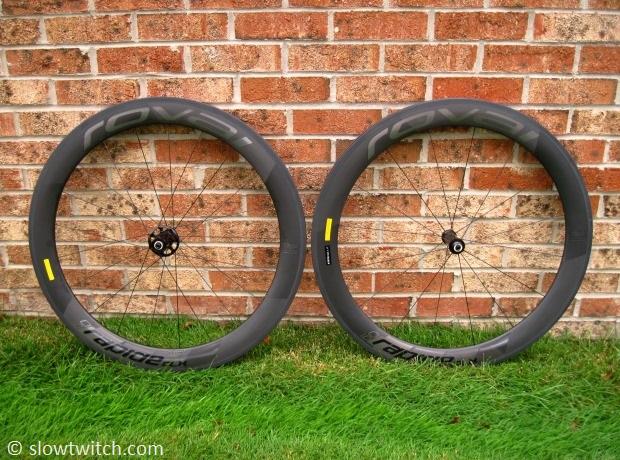
Let’s start with the basic specs.
-MSRP $2,200 USD
-1,555 grams per pair
-60mm rim depth
-24.4mm width (center of brake track)
-24.6mm maximum measured rim width
-17.3mm internal width
-130psi max pressure
-16 front, 21 rear DT Swiss Revolution spokes with aluminum nipples
-700c only, rim brake only
-240lb rider weight limit (108kg)
-Includes quick release skewers, rim tape, valve silencers, Swiss Stop Black Prince brake pads, spoke tool, and 1.8mm spacer for <11-speed cassettes
-Available at Specialized dealers worldwide
Here’s a look at the accessory kit. Note that my wheels did not include valve extenders.
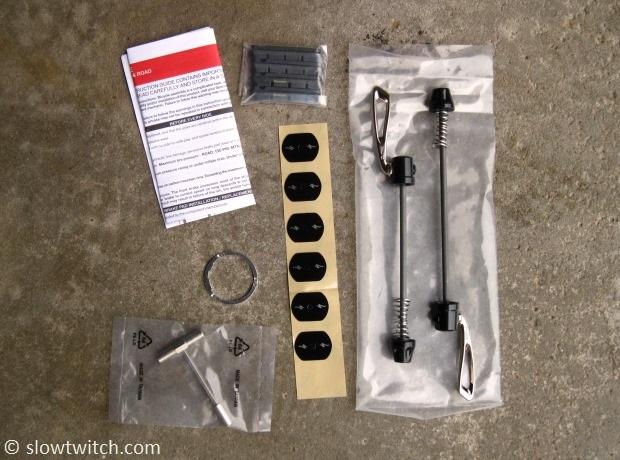
Given the overall design of the wheels, it’s no surprise that they’re included on top-end models of the Venge aero road bike; the lighter weight Tarmac gets the shallower-and-lighter CLX 40. The 40mm version is also narrower, at 23mm wide.
As with many wheels today, there are warning stickers galore:
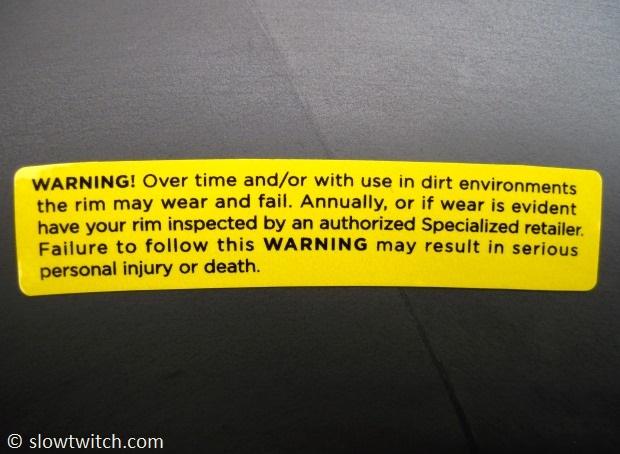
They also clearly label the rim dimensions; another increasing trend I’ve noticed with other manufacturers:
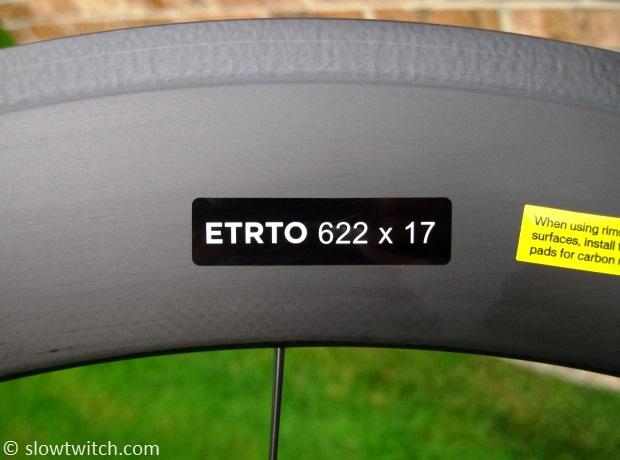
The above numbers are geek-speak for 700c diameter and 17mm inner rim width. For the fashion-conscious among you – yes, the stickers peel off easily for a clean appearance.
The rear wheel uses a 2:1 lacing pattern that we’re seeing on more and more wheels these days (two drive-side spokes for every one non-drive spoke). This evens out spoke tension very nicely on modern high-dish wheels.
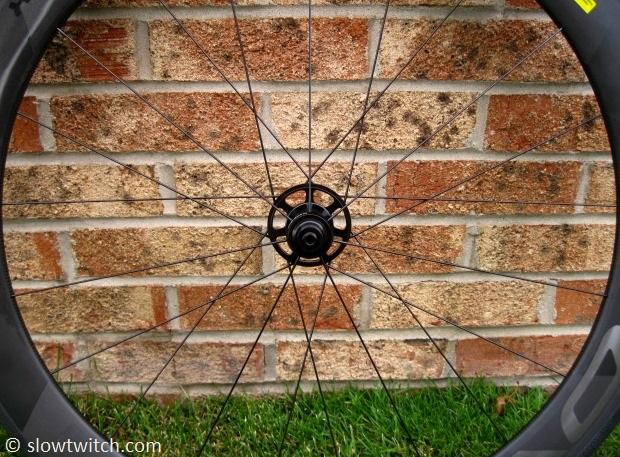
Specialized even gives you the full build record for your wheel:
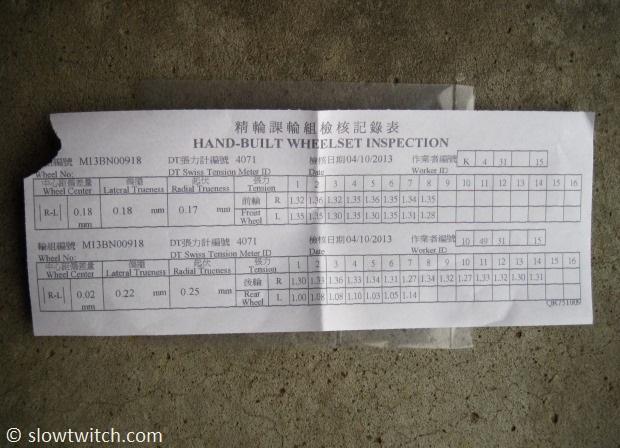
Interestingly, Specialized uses the round DT Revolution spoke. In a day and age when most manufacturers use aero spokes on aero wheels, there are some round-spoke holdouts (Easton is another example, with their EC70SL). I’ll venture a guess that the aero penalty of the Revolution isn’t huge, but I still think that a true bladed or elliptical spoke would be a more appropriate choice.
Those spokes end up in nicely finished spoke holes and internal DT nipples:
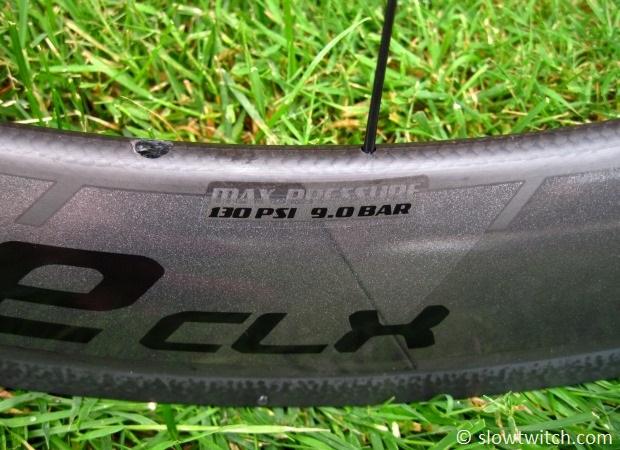
DT also supplies the rear hub’s drive mechanism. The freehub accommodates 11-speed cassettes, and can retrofit to 9 and 10-speed with the supplied 1.85mm spacer.
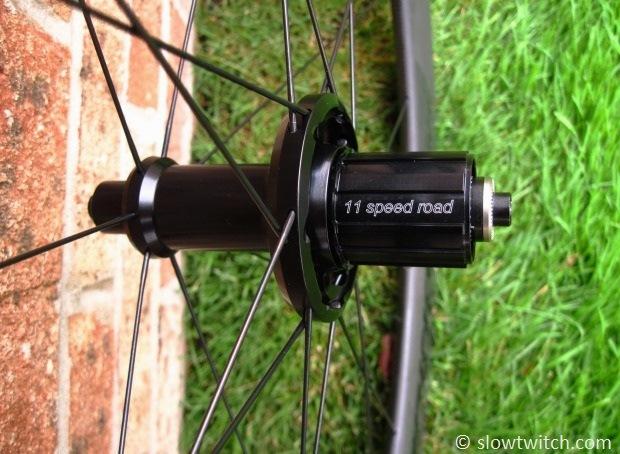
The front hub is a minimal straight-pull design. Specialized specs both front and rear hubs with CeramicSpeed brand bearings.
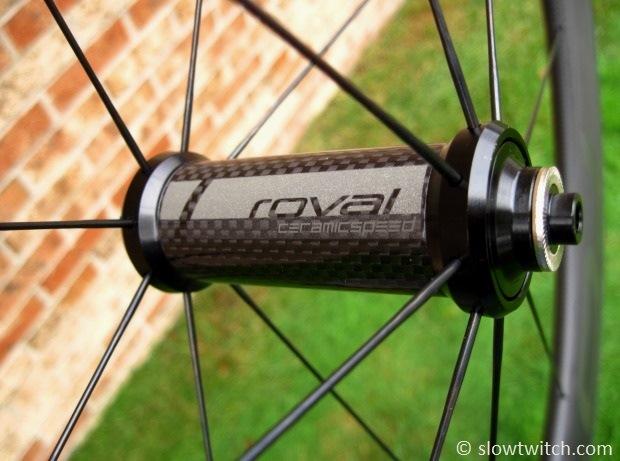
Setup and Riding
My setup of the Roval Rapide CLX 60 was smooth and uneventful – not always common, even with expensive wheels. The tires fit nicely (read: not too tight, not too loose). Specialized recommends their top-end S-Works Turbo 24 tire for the best balance of aerodynamic and rolling performance. We just reviewed these tires (linked at the bottom of this page), but chose to use the big-boy Roubaix Pro 25/28mm tire for training. On a practical note, I had already mailed my 24mm S-Works tires to Tom Anhalt for rolling resistance testing, so I needed something to ride.
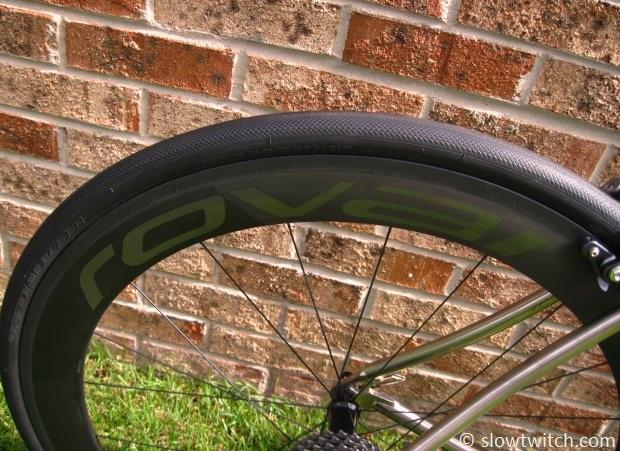
While the wide tires undoubtedly have an aerodynamic penalty, I really like the look of the wheel-and-tire combination (Batman would ride them). At about 80psi, the ride quality is outstanding. Riding around on rough pavement in the aerobars is an entirely different experience than on a standard 23mm tire… as in – you can actually do it without cringing.
When brand new, the tires measured 28.4mm wide. After a couple weeks, that grew to 29.0mm. Luckily, my frame has plenty of clearance – but the front derailleur was only about 2mm away from the tire:
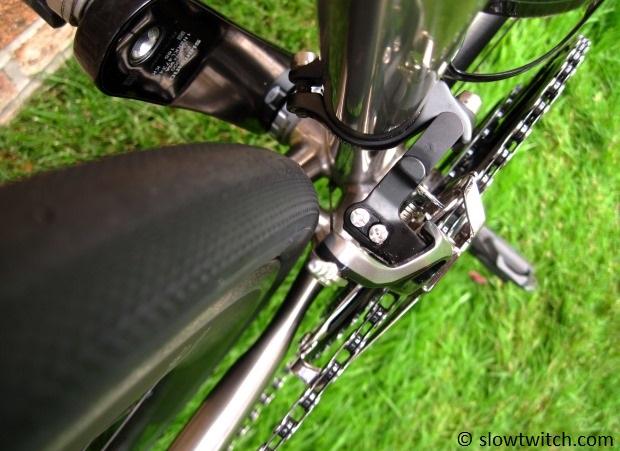
I have Rotor QXL rings on my bike currently, which require a large shim to push the front derailleur down and back. Folks running round rings (and no shim) will likely not have the tight clearance that I did.
When Tom Anhalt did roller testing of the faster S-Works Turbo 24, he found that it was almost dead-even with the 23mm Continental GP4000 S. The only thing about the S-Works that seemed a little bit strange was that they measured 25.5mm wide on a narrow Mavic rim. While that’s certainly more aerodynamic than my 28mm tires, it is likely still wider than optimal for a rim that is 24.6mm at its widest point. I’m personally not losing any sleep over it, but we thought it was worth mentioning for the nit-picky among you. Yes, that means you.
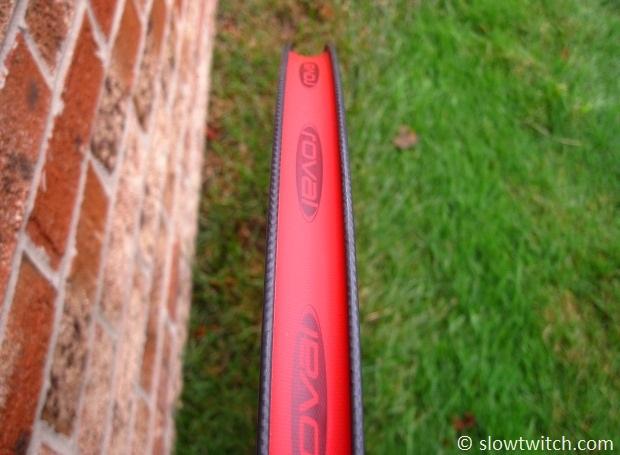
While I really enjoyed the general ride quality of the wheels, I wasn’t crazy about braking with the supplied Swiss Stop Black Prince pads. They didn’t squeal or squawk; they just didn’t offer the stopping power I wanted. For reference, my bike currently has Ultegra 6700 calipers and Cane Creek 200TT alloy levers. I really like the shape of those levers, but find that they don’t offer the same stopping power as my gold standard Dura Ace carbon levers.
With carbon braking surfaces, that’s the rub (ha!). The braking can be very good, but I find that the performance can really change based on the rim, pad, caliper, and lever that you use. Oh yeah – weather conditions, too. We all read about the potential dangers of using a carbon clincher with the wrong pad, so most wheel manufacturers mandate that you use only their pad. The devil’s advocate in me asks: What if that pad doesn’t work well for my bike’s proprietary brake caliper, or the lever that fits my hand perfectly? What if that pad works well in warm weather, but poorly in cold weather? I’m not singling out Specialized in any way – it is a real consideration for the entire industry.
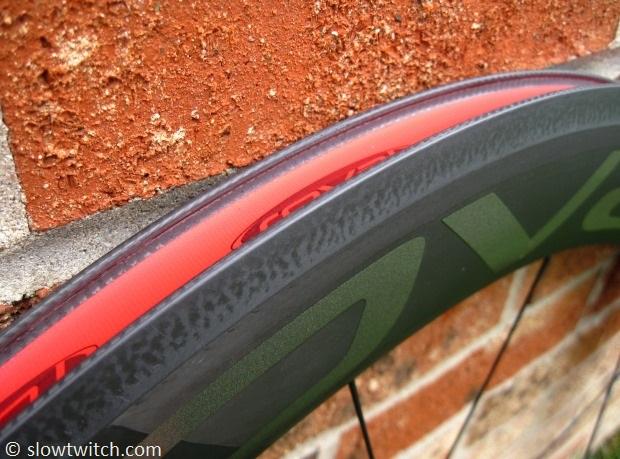
Because my caliper and lever combination wasn’t up to my liking, I got to testing. The good people at Kool Stop sent all four of their compounds for carbon rims, and I used them all. In short, they have the ‘standard’ black pad, a harder black pad, a red pad for wet conditions, and a super-grippy red cyclocross pad for freezing conditions.
After a couple rides with a jersey pocket full of pads, I settled on the harder black compound as my favorite. It felt the most like a good ol’ aluminum rim and standard pad.
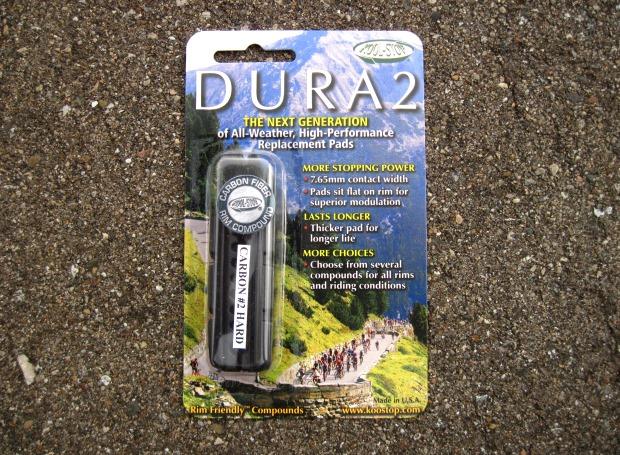
Note that my test rides were on pretty ‘average’ days – about 60-70 degrees and mostly dry. The red cyclocross pad was almost comical in how fast it could stop the bike; it is definitely not the best choice for warm and dry weather (unless you want to try flipping over your handlebars).
While Kool Stop seems to have a very good reputation for being rim-friendly, I do not have the test equipment required to actually know rim temperatures. Having recently moved from Colorado to Michigan, my riding is now much flatter than before, so I’m not concerned about heat build-up. If mountain descents were still part of my local scene, I would definitely be a little more hesitant to swap pads at will.
For now, we can only conclude that there is more research to be done before making a final conclusion. We have some better-controlled brake pad testing planned for the coming months, and hope to learn something worth sharing.
Accessories and Aero
If you want to protect your wheel investment for storage, Specialized has their Roval double wheel bag available for $60.
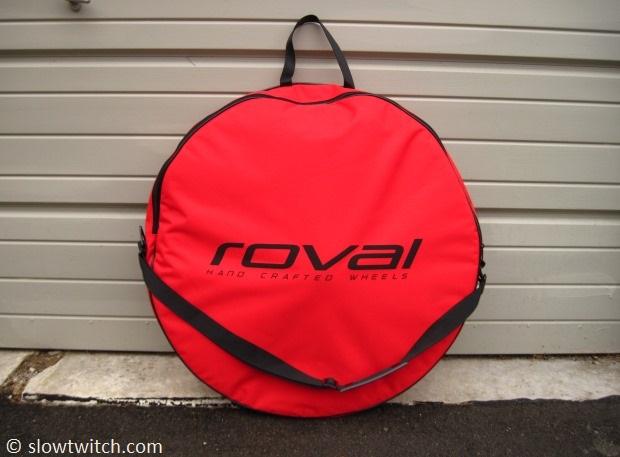
The bag is Cordura nylon, and feels tough. It is padded all around and even fit my wheels with 28mm tires.
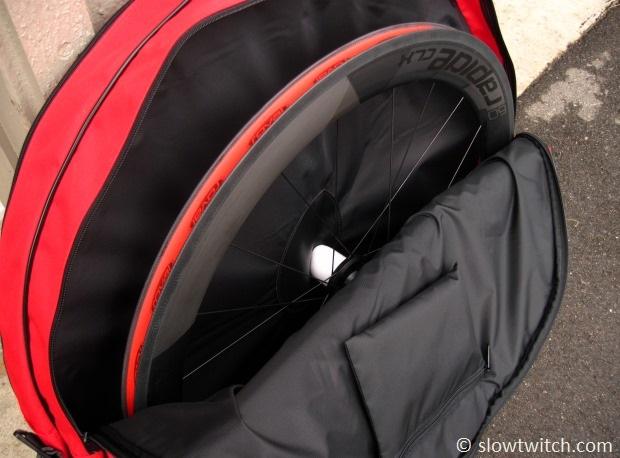
What’s the aero story with the CLX 60? Are they the Shiv of wheels?
This is an area where I definitely I respect and appreciate the position that Specialized has taken. They didn’t try to feed me a line of exaggerated claims or rigged numbers. They didn’t seem desperate for a sales story. They simply said that the wide rim shape was intended to perform best at the real-world wind angles of 10-15 degrees.
My take is that Specialized is not trying to displace products from the market like an Enve SES, Hed Stinger, or Zipp Firecrest. The Roval CLX series is intended as a very nice stock set of wheels for Specialized bikes. They’re for the person who bought a new Tarmac last year, and wants to buy an upgrade this year. This doesn’t mean that Specialized can’t expand and improve in the future – it just means that they’re not trying to conquer the wheel market in 2013. For now, they have a solid product that fits the bill nicely.
—
All images © Greg Kopecky / slowtwitch.com




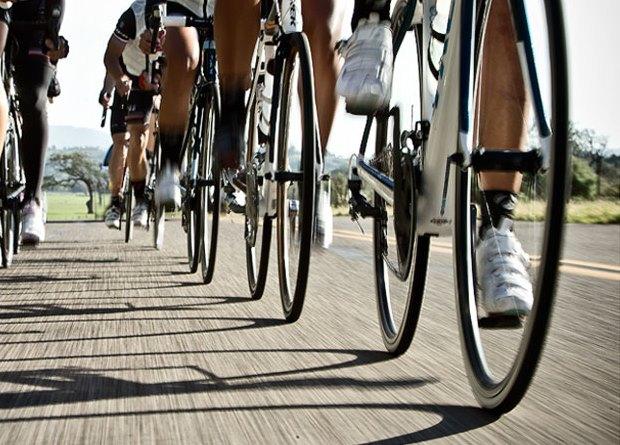
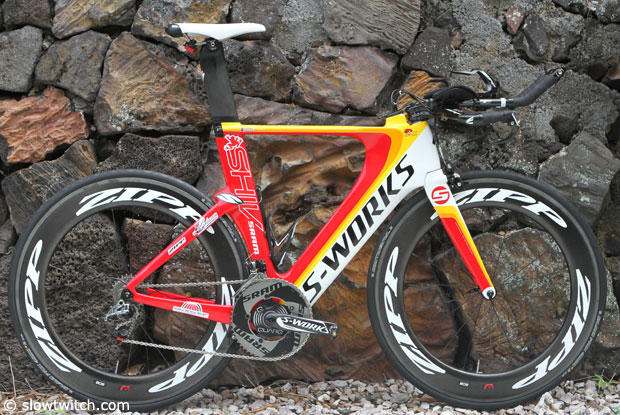
Start the discussion at slowtwitch.northend.network